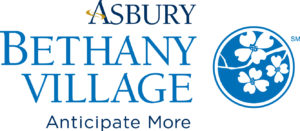Asbury Communities Partners with HJ Sims again to Streamline its Capital Structure with its Pennsylvania and Maryland Obligated Groups
“Asbury Communities once again chose HJ Sims to represent us for a refinancing in Pennsylvania and Maryland for our callable debt. The Sims team was able offer solutions for both refinancings that exceeded our expectations. One of the refinancings was a public deal that came to the market at a difficult time. Sims presented a strategy that worked better than anticipated, and we were able to refinance our debt on superior terms. I would highly recommend working with Sims as they listened to our objectives, formulated a great plan, and executed on it. We couldn’t be happier with the results.”
– Andrew Jeanneret, Chief Financial Officer, Asbury Communities, Inc.
For more information on how Asbury’s Maryland and Pennsylvania Obligated Groups, please contact:


Partnered Right®
Asbury Communities, Inc. (“Asbury”), owns and operates life plan communities in Pennsylvania, Maryland, and Tennessee, as well as HUD Section 202 senior housing buildings, a foundation, and a for-profit technology consulting firm. All of the facilities that are included in its Pennsylvania and Maryland Obligated Groups are owned and operated by Asbury Atlantic, Inc. (“Atlantic”), a wholly-owned subsidiary of Asbury Communities.
Pennsylvania Obligated Group
Asbury’s Pennsylvania Obligated Group (the “Pennsylvania Obligated Group”) consists of two communities – Bethany Village Retirement Center (“Bethany Village”) located in Mechanicsburg, Cumberland County, Pennsylvania and Springhill (“Springhill”) located in Erie, Pennsylvania, both life plan communities (LPCs). Bethany Village consists of two campuses with an aggregate of 400 independent living units, 100 assisted living units and a 69-bed skilled nursing center and related amenities. Springhill has 158 independent living units, 35 personal care units and an 80-bed skilled nursing facility.
Maryland Obligated Group
Asbury’s Maryland Obligated Group (the “Maryland Obligated Group”) consists of two communities – Asbury Methodist Village (“AMV”), a LPC located in Gaithersburg, Montgomery County, Maryland, and Asbury Solomons Island (“Solomons”), a LPC located in Solomons, Calvert County, Maryland. AMV provides a continuum of living through 826 independent living apartments, courtyard homes and villas, 133 assisted living suites and 257 comprehensive care beds located in a health care unit that includes a post-acute care unit and a memory support special care unit. Solomons has 300 independent living apartments and cottages, 24 assisted living suites and a health care center containing 48 licensed skilled and intermediate nursing care beds.
Sims recently served as underwriter to Asbury in 2018 for its Maryland Obligated Group’s Series 2018 Bonds; a financing that provided $7.5 million of new money bonds for capital expenditures, while also achieving over $8.3 million in net present value savings for the Maryland Obligated Group.
Structured Right®
Pennsylvania Obligated Group
In the summer of 2019, HJ Sims was engaged again by Asbury Communities to facilitate the refinancing of the Pennsylvania Obligated Group’s outstanding Series 2010 Bonds and the Maryland Obligated Group’s outstanding Series 2009B Bonds. Asbury Communities also sought Sims’ partnership in modifying the support agreement between Asbury Communities and the Pennsylvania Obligated Group and restating their existing Master Trust Indenture to align it with the modernized terms from the Maryland Obligated Group’s Series 2018 Refunding Bonds. Sims served as Underwriter of the Series 2018 Bonds, and worked closely again with management of Asbury to facilitate their objectives of minimizing overall interest expense while attaining level debt service and maximum flexibility
Maryland Obligated Group
For the Maryland Obligated Group, Sims facilitated a request for proposals process to select a bank partner and negotiated a tax-exempt bank loan used to refinance the Series 2009B Bonds, and finance $5,000,000 in capital expenditures reimbursements made by Maryland Obligated Group in the ordinary course of business.
Executed Right®
Pennsylvania Obligated Group
In order to meet the strategic financing objectives of Asbury, Sims suggested a short-term forward commitment to reduce or eliminate the effects of negative arbitrage from a current refunding occurring within 90 days of an optional redemption date. Sims priced the Pennsylvania Obligated Group’s Series 2019 Bonds on November 7, 2019, and set closing on December 31, 2019 to eliminate negative arbitrage through the first optional redemption date of the Series 2009B bonds on January 1, 2020. By doing so, the Pennsylvania Obligated Group avoided nearly $600,000 of negative arbitrage between the pricing date and closing date, reduced the overall borrowing, and maximized savings. The structure for the Pennsylvania Obligated Group also included semi-annual sinking fund installments, call provisions that took into account the impact of the elimination of advanced refunding bonds, and restated the underlying master trust indenture documentation and support agreements.
Maryland Obligated Group
As part of the Maryland Obligated Group’s bank financing negotiations, Sims was able to procure a 4 year, fully amortizing loan matching the maturity of the Series 2009B Bonds at a swap rate of 2.226% and a 7 year, fully amortizing loan for the reimbursement of capital expenditures at a swap rate of 2.309%. This financing also effectively defeased the final series of bonds that had been issued under the Maryland Obligated Group’s original operating support agreement, opening the door for the complete elimination of the operating support agreement if the Maryland Obligated Group wanted to do so.
Financed Right®
Pennsylvania Obligated Group
For the Pennsylvania Obligated Group, the aggregate $59,480,000 Series 2019 Bonds are projected to generate nearly $850,000 of debt service savings annually through 2041 and over $1.2 million annually from 2042 to 2045 for an aggregate net present value savings of $15 million over the life of the bonds.
Maryland Obligated Group
For the Maryland Obligated Group, notwithstanding the $5 million additional funds borrowed, the financing resulted in a mere approximate $20,000 increase in maximum annual debt service and achieved Maryland Obligated Group’s goals. The implemented financing structure allows Asbury to achieve its objectives of minimizing overall interest expense while sustaining and improving debt service coverage metrics and providing maximum flexibility.




For more information on how Asbury’s Maryland and Pennsylvania Obligated Groups were Financed Right® by HJ Sims, please contact: